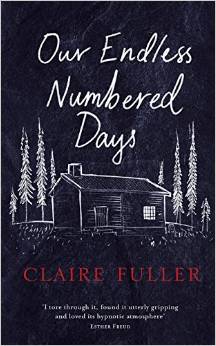Claire Fuller, author of Our Endless Numbered Days, shares writing advice and discusses writing dual narratives.

Gone Girl, How to be Both, Instructions for a Heatwave: everyone’s at it - using dual or multiple narratives to interweave two or more stories often from different time periods. Less common are books that use a dual narrative from the point of view of the same character.
In Our Endless Numbered Days, the narrator, Peggy Hillcoat, starts telling her story in her present day – 1985 – and then goes back to 1976 to when she was eight. The chapters mostly alternate between one November day in 1985 and the time period from 1976 onwards, until the end of the novel when the two strands collide.
When I started writing I wasn’t looking for a clever structure, I didn’t even realise that the one I used wasn’t that common, I simply wanted to tell the story in the best way possible and like many first-time novelists I muddled my way through. I wrote each chapter consecutively, flipping back and forth between the years, but when I had finished the first draft, I wasn’t sure the 1985, single-day narrative hung together, so I lifted all of those chapters out and rewrote them. Then I put them back in, and revised them in-situ ensuring that they gave hints about what might be about to happen in the other time period, whilst not giving anything away. It was a challenge!
If you’re writing a dual or multiple narrative novel, here are some things you might want to think about:
- Make each strand as interesting as the other(s). You don’t want readers to be skimming through one narrative because they enjoy the others more. Make sure they have emotional investment in all stories.
- Break the action of each narrative at a critical point. The dual narrative structure is a perfect way to create cliff-hangers that will keep your readers turning pages. A cliff-hanger doesn’t always have to be something astounding; just make sure you leave a question in the readers’ minds.
- Use each narrative to shine a light on the other. Have fun with your dual narratives – use them to bring out themes, to foreshadow events, to give hints and clues and as I said above, to set up questions. For example in my first chapter, in 1985, Peggy looks at a photograph of her father sitting at her mother’s piano: ‘I was surprised to see him sitting there. I have no recollection of him ever sitting at the piano or playing it, although of course, it was my father who taught me to play.’ How her father could have taught her to play without her recalling him doing it, hopefully sets up a question which is answered in the second narrative strand.
- Find the way of writing that works for you. Some writers create the strands separately and then bring them together, some, as I did, write them at the same time. It doesn’t matter which way you do it, but when you do bring them together you have to work hard on the interweaving.
- Make clear jumps between narratives. In Our Endless Numbered Days the jumps between the two strands are by chapter. This is probably the clearest way to sign-post to the reader that they are moving from one narrative to another, but even so, I decided to put a date and location at the heading of each 1985 chapter, so the reader was never lost. It can be done more subtly than this, and should be if the jumps are within chapters. You can use character, location, dialogue, or anything that will help the reader know which narrative they are moving into. This is especially important for the first jump you write.
- Make a connection between the two narratives. The connection could be very subtle – a theme, an emotion, an object – or as in my case, very obvious – the narrator. But you do need to reveal a connection at some point, otherwise you might as well write two novels.
- Don’t be too tricksy. Don’t decide on a dual narrative structure because you want your novel to be interesting or challenging; it has to be right for the story. Bear in mind that in a dual narrative you will probably have to withhold information at some point and you don’t want this to appear forced.
- Remember to deal with aging. If your dual narratives use some of the same characters, you will have to make them age believably. My two strands are both about Peggy. She needed to have the same fundamental characteristics, but in one strand she is seventeen, whilst in the other we first meet her age eight. Similarly, you need to consider your characters’ physical characteristics and how those will change over time.
- Remember the character arc. Writing theory often talks about the character arc – how will characters change over the course of the story; what will they learn? With a dual narrative from a single character’s point of view, this can be harder to manage. In the case of Our Endless Numbered Days, Peggy’s main arc happens in the 1976 and onwards chapters. But she also needs to change during the single day in 1985 in a way which matches the other character arc.
It’s a lot to think about, but the most important thing is, if you enjoy writing both narratives then most likely your readers will enjoy them too.
Claire Fuller’s debut novel, Our Endless Numbered Days is published by Fig Tree, an imprint of Penguin. Find out more on her website.
Comments